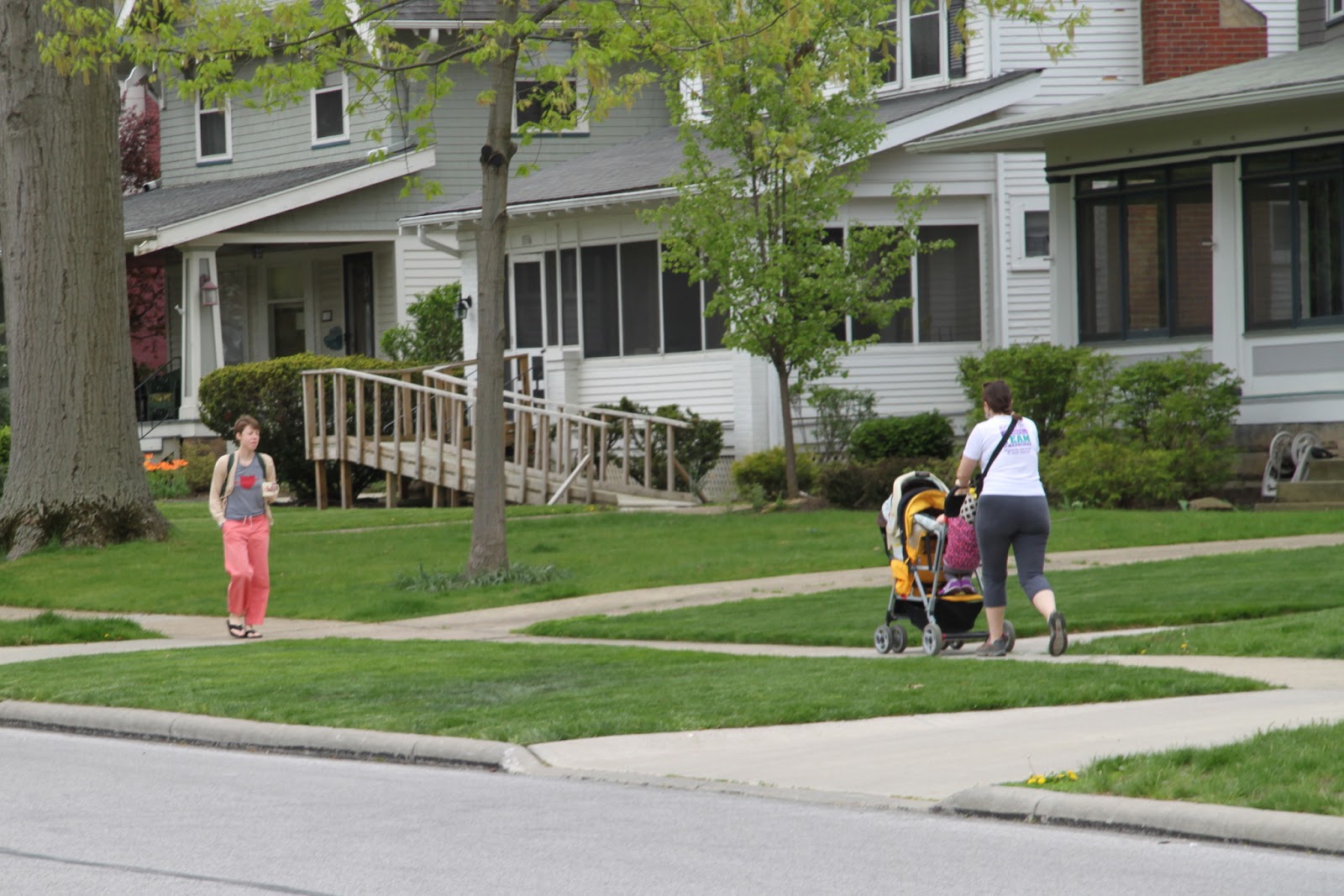Why walkable places are preferred

Note: This article is published in the December 2013 issue of Better! Cities & Towns.
Just more than half of Americans (52 percent), say they want a detached house with a large yard — compared to a house with a small yard or no yard at all, according to the latest poll of the National Association of Realtors (NAR), released in October.
Does that mean that Americans want more of what the housing industry has been providing for the better part of three generations—spread-out subdivisions with drive-to shopping centers and office parks? The desire for the house with the big yard has fueled suburban growth since the end of World War II and was a major force behind the American suburban dream of the last half of the 20th Century.
But the statistic could be compared to your favorite ice cream. Question: Would you like a single scoop or a two-gallon tub of your favorite ice cream? A yard is appealing. A big yard is more appealing. Put that way, I’ll take the big yard and the two-gallon tub.
But that’s not how people navigate the difficult choice of where to live. The decision involves trade-offs on many factors, many of them conflicting. Americans overwhelmingly want a short commute (or no commute at all). They want easy access to the things they need (60 percent favor a neighborhood with a mix of houses and stores and other businesses within walking distance, NAR says). Fifty-nine percent want public transportation within an easy walk of their home, the survey reports.
They want choice in how to get around (driving, walking, biking, public transportation), and they want easy access to culture and parks, preferably within walking distance. Sometimes home buyers simply fall in love with the charm of a community (the vast majority of respondents, 78 percent, say that the neighborhood is more important than the house in choosing where to live, NAR reports).
When Americans today are given a choice involving these trade-offs, the option of a walkable, compact, mixed-use community comes out consistently ahead of conventional, drive-only places, the NAR survey shows (by a margin of 60/35 to 50/45, depending on how the question is phrased).
oversupply of drive-only suburbs
The concept of drive-to-where-you-live suburbia was rational and appealing to the majority of households, policymakers, and industry when it was new in the middle of the last century. Commutes were short, open space was plentiful, and the demand for mass-produced subdivisions was huge. We subsidized this new growth and enacted policies — single-use zoning, setback and parking requirements, street standards, finance controls — that made building traditional neighborhoods illegal. Predictably, over seven decades, we have overbuilt the drive-only suburban option. Researchers such as Arthur Nelson and Christopher Leinberger—whose work is featured in this issue—have confirmed this oversupply.
As traffic congestion, longer commutes, more expensive driving, and loss of open space has eroded the advantages of conventional suburban communities, the virtues of your grandparents’ communities are once again widely recognized. For the public and private sectors, walkable places create a ton of value. It’s not just the higher density, but the way that density is arranged in cities and towns that generates economic and social value not available in drive-only suburbs.
Smart growth allows for creation of quality public space, proximity to culture and civic amenities, and the connection to nature that is accessible on foot. It allows for transportation choice and the ability to reduce household automobile costs. It’s simply a more efficient way to build. Combine these qualities with current undersupply and a strong ongoing demand for walkable places, reflected in research reported throughout this issue, is inevitable.
For more in-depth coverage:
• Subscribe to Better! Cities & Towns to read all of the articles (print+online) on implementation of greener, stronger, cities and towns.
• Get New Urbanism: Best Practices Guide, packed with more than 800 informative photos, plans, tables, and other illustrations, this book is the best single guide to implementing better cities and towns.




